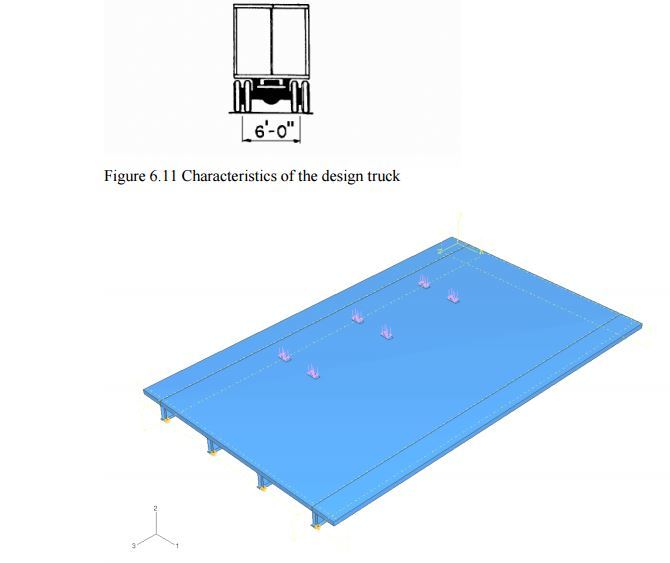Hi all,
I have some truck axle loading modelled as patch load as shown below to load a bridge. For interaction property, I used Tangential Behaviour which is affecting the results significantly.
I know that there would be some friction in reality when the vehicle tyre is on bridge (stationary not moving vehicle), how I can specify that friction here?
Results of load-displacement curve is affected by changing the Tangential behaviour, higher coefficient of friction giving much higher loading (which of course is not realistic). I've been using tangent coefficient of 0.1 for my analysis so far. I appreciate if someone give me some explanations how to specify friction for this case or if friction is needed at all.
Cheers,

Shoot for the Moon, even if U miss, U still land among Stars!
I have some truck axle loading modelled as patch load as shown below to load a bridge. For interaction property, I used Tangential Behaviour which is affecting the results significantly.
I know that there would be some friction in reality when the vehicle tyre is on bridge (stationary not moving vehicle), how I can specify that friction here?
Results of load-displacement curve is affected by changing the Tangential behaviour, higher coefficient of friction giving much higher loading (which of course is not realistic). I've been using tangent coefficient of 0.1 for my analysis so far. I appreciate if someone give me some explanations how to specify friction for this case or if friction is needed at all.
Cheers,

Shoot for the Moon, even if U miss, U still land among Stars!
